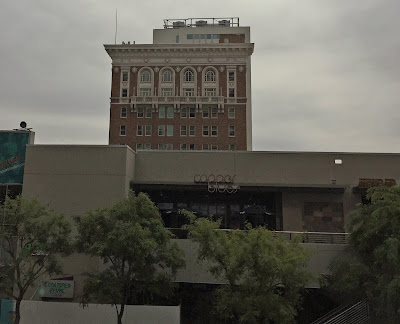Phoenix, Arizona in the 1940s

Since most of the people that I talk to about Phoenix were born after World War II (the generation that was originally called "the Baby Boom", now called Boomers), they can't possibly have much in the way of memories of Phoenix in the 1940s, other than the fact that they were kids. In fact, I was once told, a few years ago, that Phoenix didn't really begin until the 1940s (by someone who was born in the 1940s). And I can understand that point of view. Phoenix didn't really begin for me until the 1980s, when I moved there as a teenager. Everything that I've learned about Phoenix before that time comes from old photos, from what I've read, and what people have told me. And Phoenix definitely was there before me. In fact, it goes all of the way back to 1870. And even photos from the 1940s seem to be so different from the Phoenix that I know that it kinda freaks me out. Since Phoenix changes so quickly, it can be difficult to imagine what it was like in ...













